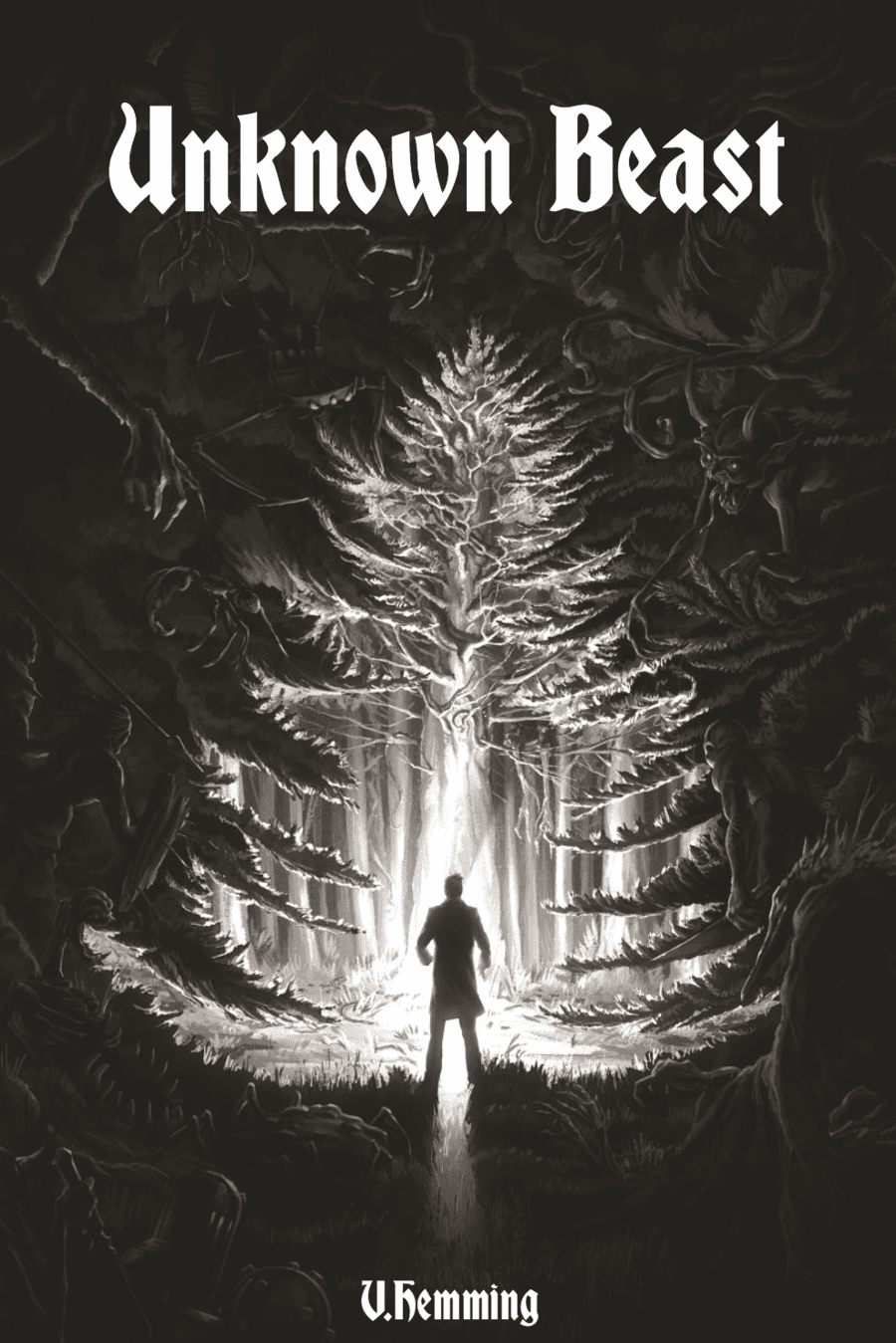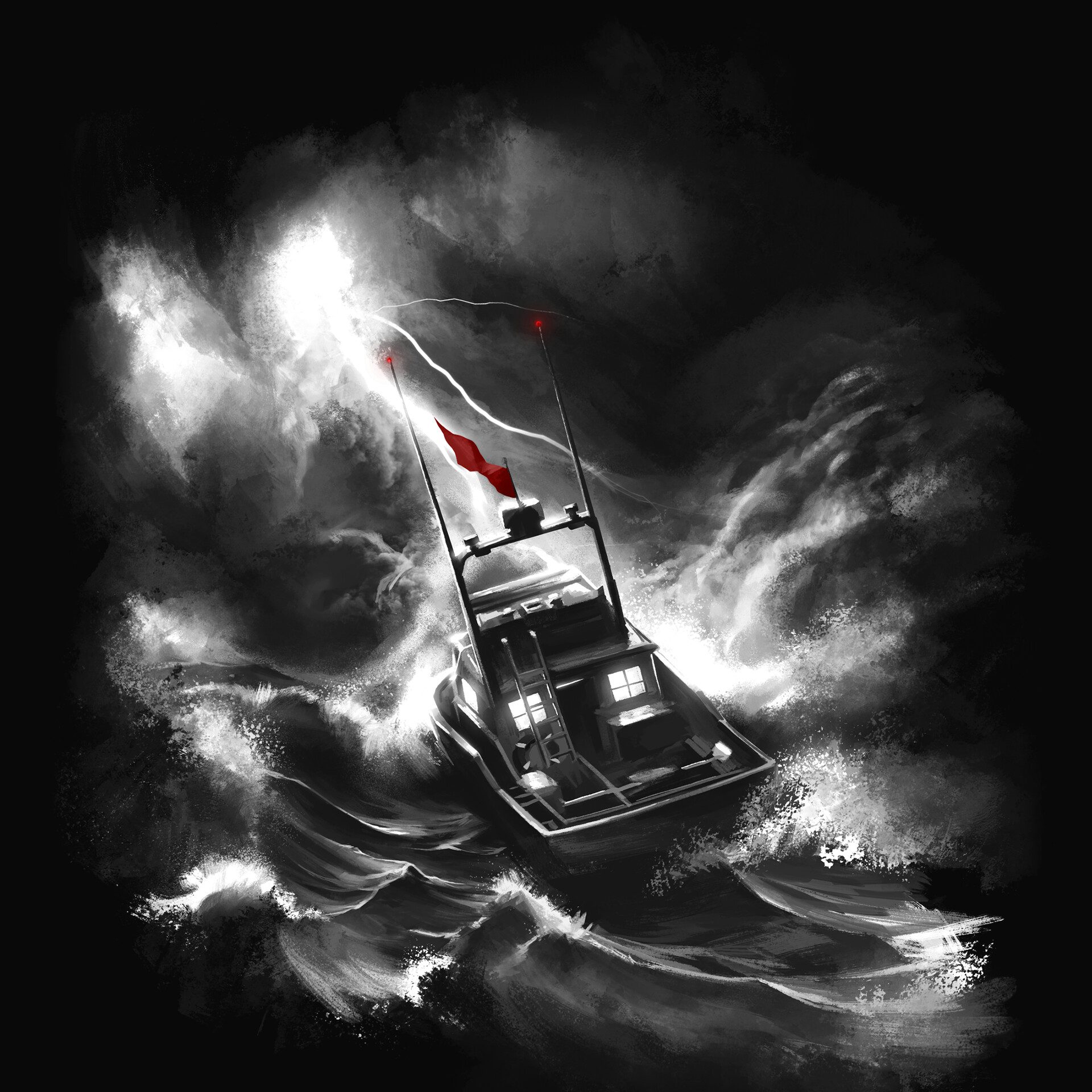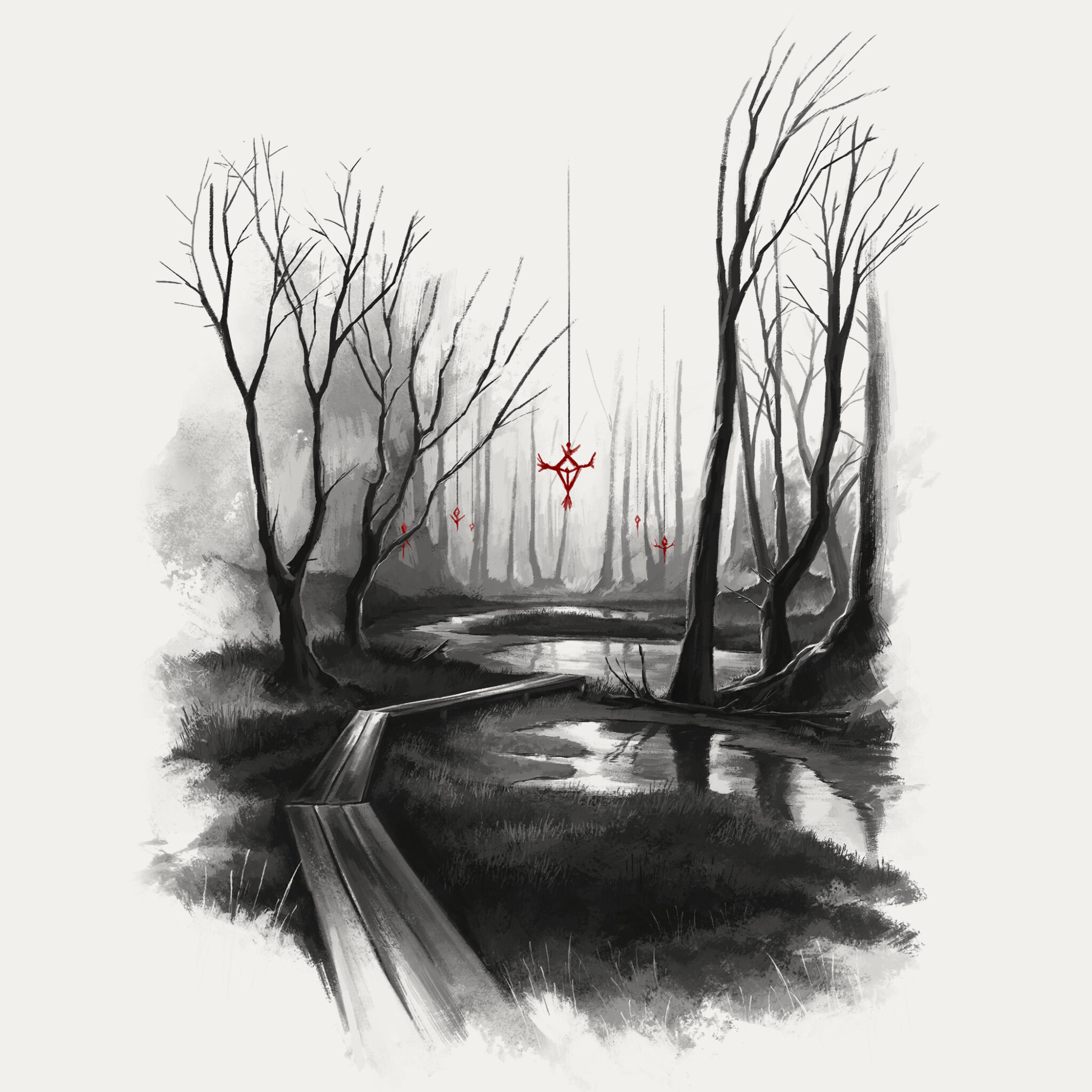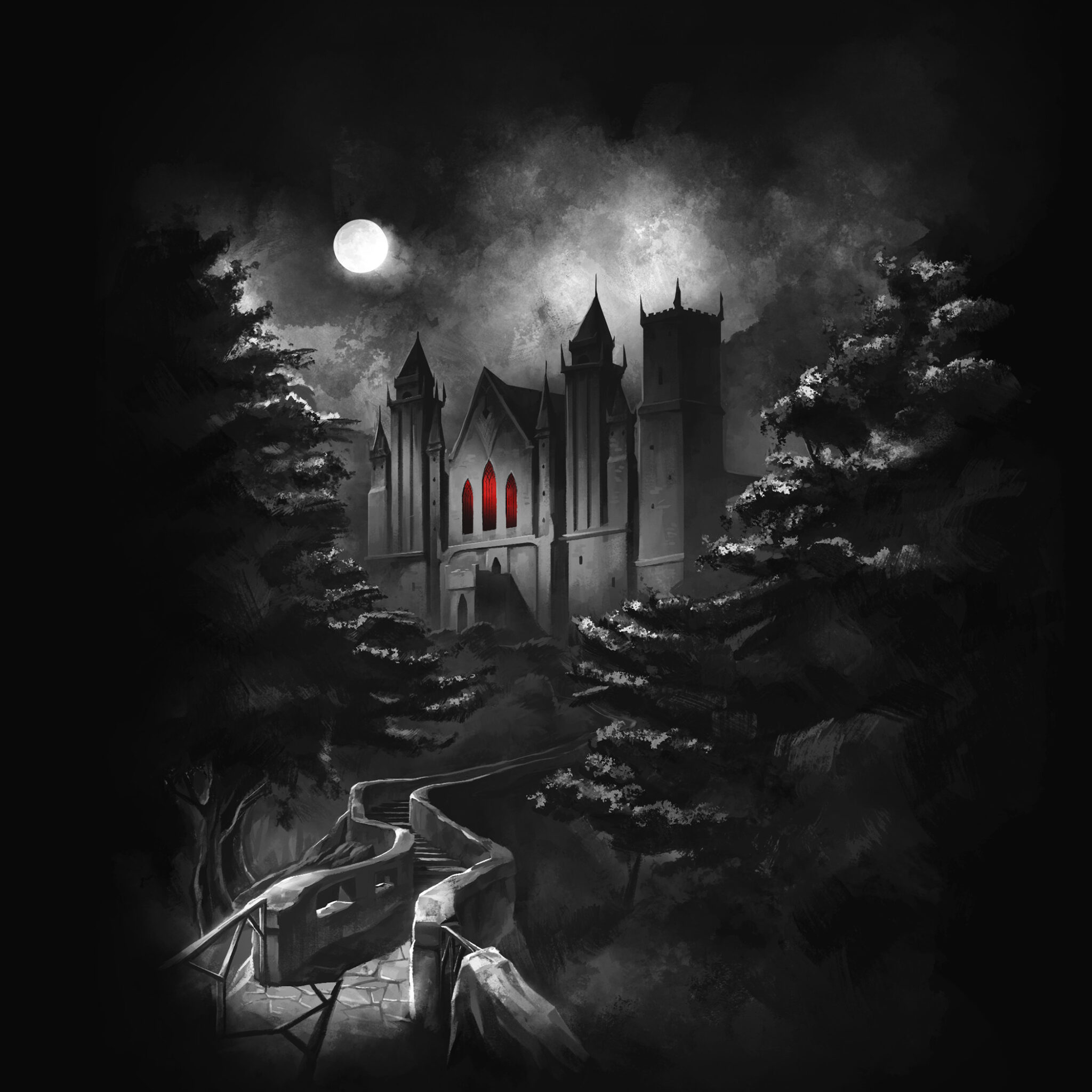You and your friends have decided to play a mystery game, where you intend to investigate a haunted house and what lingers inside. The only problem is that nobody is the GM. What’s going to happen?
This is, at its core, the basic concept of V.Hemming’s Unknown Beast, “a GMless, low-prep, horror-mystery tabletop roleplaying game.” Like any good mystery game, players are investigators from various lifestyles and stories who have been drawn in together by some greater monstrosity in hopes of identifying and opposing the enemy that stands before them.

The game’s mechanics are, on their face, fairly simple. A group of players come together and agree to set up a basic story. For example, they could all be traveling on the country across the United States in the 1920s or they could be a number of people in the city in the 2020s. The mechanics are setting-neutral, so the story is up to you. The campaign begins with a player being assigned as the “Beast.” The Beast sets a scene and the start of a mystery, and the players are encouraged to investigate or engage with it. They’ll be asked to roll a number of dice against the roll of the Beast to investigate, engage and use their skills. The Beast, meanwhile, will use the actions to both tell a story about the world around the players and perhaps about this threat. Once the players have fulfilled a certain set of conditions, the next player becomes the Beast and the story continues.
The core of the game’s design is the players’ ability to improvise and build upon the storytelling that others have done before them. If the first player establishes that they found a train heavily damaged, then the second can’t pivot and add modern technology or contradict any potential clues that the first presented. Each consecutive storyteller diminishes the ‘bubble’ that the next player can engage in, providing a framework and challenge. They also help bring depth and character to the Beast. And as players learn more about the Beast, the closer they get to potential danger and to the Beast fulfilling their goal.

The notion of allowing a mystery to be told by a group around the table is a fascinating one since it presents a number of unique challenges for the story. Two of the most prominent struggles that stood out in the single test session I played is how to start the story, and how to maintain cohesion of the narrative. If this were a normal TTRPG game, the DM/storyteller has to come up with a promising hook that excites the player; a notion that isn’t always natural to writers or roleplayers (there’s a reason so many campaigns start with “You all meet in a tavern,” after all.)
At the same time, ensuring there’s coherence is integral. For example, let’s say the first “Beast” establishes some basic facts implying that the monster has scales. The second storyteller has to continue to build around that fact and not contradict it in whatever they establish. For some friends, this will be a natural practice. For others, they may find their ideas or story concepts clashing with one another. In order for a game like this to work well, there must be a “social contract” of sorts encouraging coherence and a desire to tell a story rather than one-up one another.
However, players can use mechanics to ‘amend’ the story to their benefit. The “Beast” can use various powers to affect the state of the story, whether damaging another player or creating tension through multi-step threats that may require evasion or physical force to remediate. They can also change details since a player’s understanding of the Beast may not be as accurate as they want it to be.
The game also has an inherent time mechanic in its “Doom” mechanic. Whenever the Beast affects the players, has a threat succeed or uses their power to add to the doom meter, a clock ticks down to the final confrontation. Once the Doom counter reaches 8, it’s time for the Beast to be revealed! They’ll have a final goal to pursue and the players will have to either gather sufficient information to understand and defeat the monster or get ready to clash with them however they think is best.

The one thing the game does do to differentiate itself from other mystery or monster-oriented games is de-emphasize death. If this was something like Call of Cthulhu then death and the risk of madness is forever present in the minds of the player’s. One wrong move and a player may find themselves torn to pieces by the monster they’re hunting. Unknown Beast does its best to encourage tension and threats, but death is discouraged. Damage to a character is certainly possible, but the game tries to give that thematic meaning by having it remove dice from the equation.
This design choice appears, in part, because of the communal structure. Although it is possible, removing another player from the game isn’t in the game’s interest.
Unknown Beast at the Table
I got a chance to run a single game of this with friends, and the concept is very intriguing. It was fun to go around the table and allow each of us to form the story in our own way. But I also struggled with the balance of not being the GM.
Let’s say I want to introduce my friends to a game like Pathfinder. As the GM/Storyteller, it’s assumed that I 1) understand the rules and 2) can help other players dig through all the particulars of the mechanics to get the results they desire. It’s not uncommon that I have new players at my table who haven’t read the entirety of the Player’s Handbook. And that’s okay by me. I love helping new players understand mechanics.
Unknown Beast requires new players to understand both the rules of the ‘player’ and of the ‘Beast’, each of which operate differently and can influence the story through several means. This places a significant commitment on each player to read both rulesets and operate appropriately within them. If there is a misunderstanding or a misinterpretation of the rules, resolution may not easily arise. Ideally, the game is played at a table where all the players are comfortable and willing to work with one another to make the narrative interesting and fun, but the game places a lot of work on the individual players to make it viable.

Unknown Beast is a game that will work really well for players who adore improvisation and the creation of story on the fly. This will be a blessing in disguise for the ‘forever-DMs’ in your life, and may offer a chance to practice that ability to tell a story and build upon your friends’ ideas to create something absolutely spectacular. At the same time, it may not work for your group if that ability to improvise isn’t prominent. It’s also designed especially for those inclined toward horror, so do be mindful of that with your players.
Unknown Beast is available on DriveThruRPG as either a PDF (MSRP $15) or softcover book (MSRP: $25).
Images via V. Hemming
Have strong thoughts about this piece you need to share? Or maybe there’s something else on your mind you’re wanting to talk about with fellow Fandomentals? Head on over to our Community server to join in the conversation!


